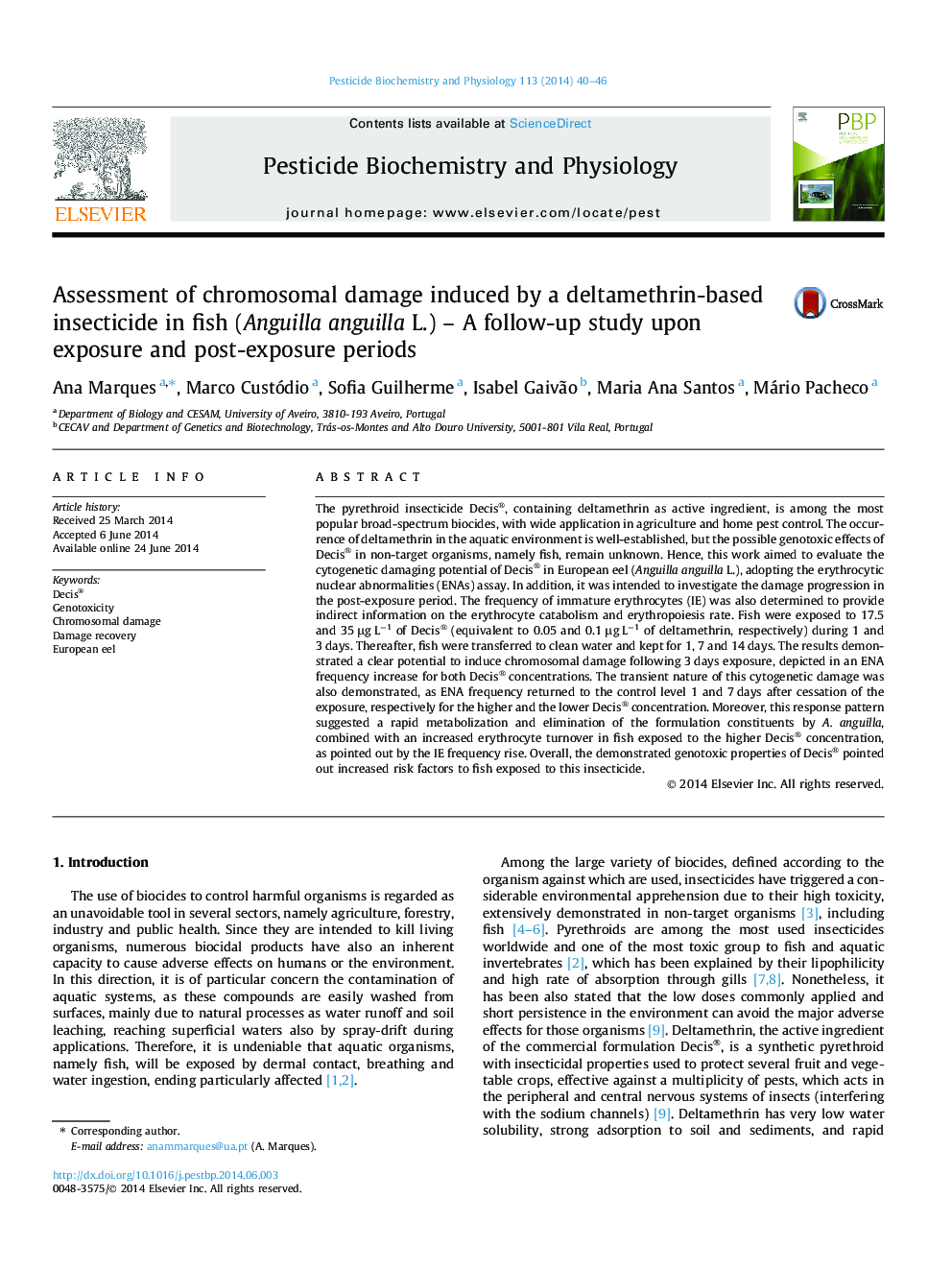| کد مقاله | کد نشریه | سال انتشار | مقاله انگلیسی | نسخه تمام متن |
|---|---|---|---|---|
| 2009321 | 1541786 | 2014 | 7 صفحه PDF | دانلود رایگان |

• The deltamethrin-based insecticide Decis® induced chromosomal damage.
• The transience of the cytogenetic damage, measured as ENA induction, was demonstrated.
• It was suggested a rapid metabolization/elimination of Decis® constituents by the fish.
• An increased erythrocyte turnover was associated to the return of ENA to control levels.
• Present findings highlighted the genetic hazard to fish associated to Decis® exposure.
The pyrethroid insecticide Decis®, containing deltamethrin as active ingredient, is among the most popular broad-spectrum biocides, with wide application in agriculture and home pest control. The occurrence of deltamethrin in the aquatic environment is well-established, but the possible genotoxic effects of Decis® in non-target organisms, namely fish, remain unknown. Hence, this work aimed to evaluate the cytogenetic damaging potential of Decis® in European eel (Anguilla anguilla L.), adopting the erythrocytic nuclear abnormalities (ENAs) assay. In addition, it was intended to investigate the damage progression in the post-exposure period. The frequency of immature erythrocytes (IE) was also determined to provide indirect information on the erythrocyte catabolism and erythropoiesis rate. Fish were exposed to 17.5 and 35 μg L−1 of Decis® (equivalent to 0.05 and 0.1 μg L−1 of deltamethrin, respectively) during 1 and 3 days. Thereafter, fish were transferred to clean water and kept for 1, 7 and 14 days. The results demonstrated a clear potential to induce chromosomal damage following 3 days exposure, depicted in an ENA frequency increase for both Decis® concentrations. The transient nature of this cytogenetic damage was also demonstrated, as ENA frequency returned to the control level 1 and 7 days after cessation of the exposure, respectively for the higher and the lower Decis® concentration. Moreover, this response pattern suggested a rapid metabolization and elimination of the formulation constituents by A. anguilla, combined with an increased erythrocyte turnover in fish exposed to the higher Decis® concentration, as pointed out by the IE frequency rise. Overall, the demonstrated genotoxic properties of Decis® pointed out increased risk factors to fish exposed to this insecticide.
Figure optionsDownload as PowerPoint slide
Journal: Pesticide Biochemistry and Physiology - Volume 113, July 2014, Pages 40–46